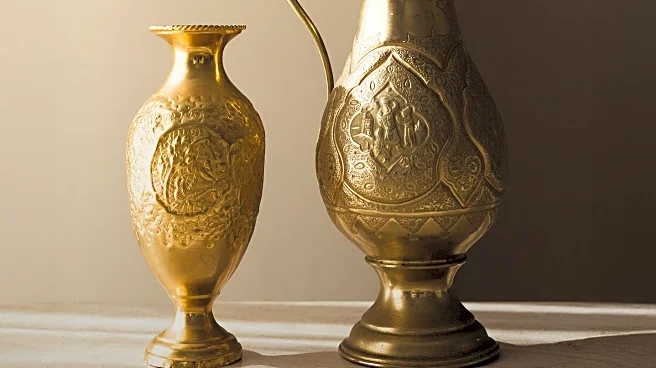What's Happening?
Israeli archaeologists have discovered a 1,600-year-old agricultural estate in Kafr Qasim, central Israel, revealing insights into the Samaritan community's prosperity during the late Roman to Byzantine periods. The excavation, led by the Israel Antiquities Authority (IAA), uncovered a large estate featuring a well-preserved mosaic floor with geometric patterns and plant motifs, including rare depictions of fruits and vegetables. The site also included an olive press, a warehouse, and a ritual purification bath, indicating the production of oil in ritually pure conditions. The estate's transformation from luxury living to agricultural production is believed to be linked to the Samaritan revolts against Byzantine rule in the 5th and 6th centuries.
Why It's Important?
The discovery highlights the historical significance and cultural heritage of the Samaritan community, which thrived for centuries despite political upheavals. The findings underscore the community's wealth and prosperity, as evidenced by the quality of the mosaic floors and agricultural installations. This archaeological site provides valuable insights into the shared history of Jews and Samaritans, emphasizing their common roots and experiences under hostile rulers. The preservation of Samaritan identity through artifacts like ceramic oil lamps further enriches the understanding of ancient communities in the region.
What's Next?
The excavation may lead to further archaeological studies to explore the extent of Samaritan influence and their interactions with neighboring communities. The findings could also inform future heritage conservation efforts and educational programs to promote awareness of the region's diverse historical narratives. Additionally, the site might attract tourism, offering visitors a glimpse into the ancient Samaritan way of life and their contributions to the cultural tapestry of Israel.
Beyond the Headlines
The discovery raises questions about the resilience and adaptability of ancient communities in the face of political and social challenges. It also highlights the importance of preserving cultural heritage sites, which serve as tangible connections to the past. The estate's continued use and preservation of Samaritan identity despite revolts suggest a complex interplay between cultural continuity and change, offering lessons for contemporary societies navigating identity and heritage.











